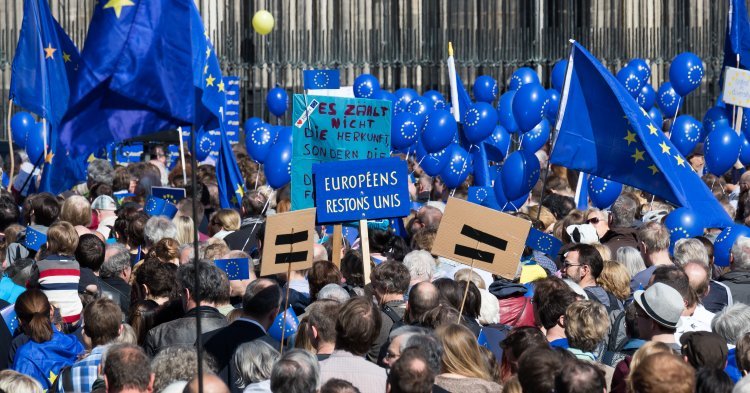Proponents of a federal Europe have a vision of how the EU should work. Transparent decision-making with the people in charge, instead of nightly backroom deals between governments. Deciding on things in Brussels when that brings added value, while deciding on local and national issues closer to the people. Ensuring the public understands Europe and has the tools to participate.
All of these demands are about substance, not about form. The federalists do wave the European flag because the project cannot succeed without a sense of European citizenship. But we also recognise that flag-waving is not the same thing as making the EU work, and that if we are to choose between the two priorities, the latter is more important. A “European Union” that works is better than a “United States of Europe” that doesn’t.
The fantasy of the great revolutionary moment periodically comes up in Europhile discussions. Dimitri finds out that Europe “became a federation last week” and begins dancing to a club version of the European anthem. Considering the gradual development of the EU system over the past decades, this frame of thinking is suspect: the EU doesn’t turn from a ‘non-federation’ into a federation in a week, as the EU of today is not exactly a ‘non-federation’. However, I do grant that a new treaty reform that addresses key points of federalists could indeed ‘give the finishing touches’ to the federalist project in one go. [1]
If we can ever pinpoint one moment when a federal Europe was created, it’s still probably for the best if that moment is somewhat less than spectacular. What might be a moment of triumph for the hardcore Europhiles – the glorious renaming of European institutions to mark the start of a new era – would also be liable to terrify moderate citizens who accept the European project.
The public might well support a stronger EU that is better able to address problems like economic crises, terrorism, or the so-called migration crisis. At the same time, they would be unlikely to support a revolutionary step to a new pan-European state. We’re more likely to fix Europe’s problems if we frame our project as being about – wait for it – fixing Europe’s problems.
The risk is the same as with the French referendum on the European Constitution: call things the wrong way, and you may fail. A pragmatist’s nightmare!
Federalists are passionate, yet pragmatic. Precisely because we have a real vision for Europe, beyond just saying “Europe is good”, we should put the vision first, and leave symbolism second. Whether federalists’ key points are addressed quickly or slowly, it’s likely that the we have to compromise on something. A funky new name for the European Parliament – inconsequential to the daily lives of people – should be the first thing we compromise on.


Follow the comments: |
|
